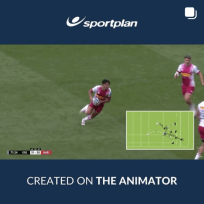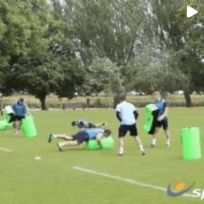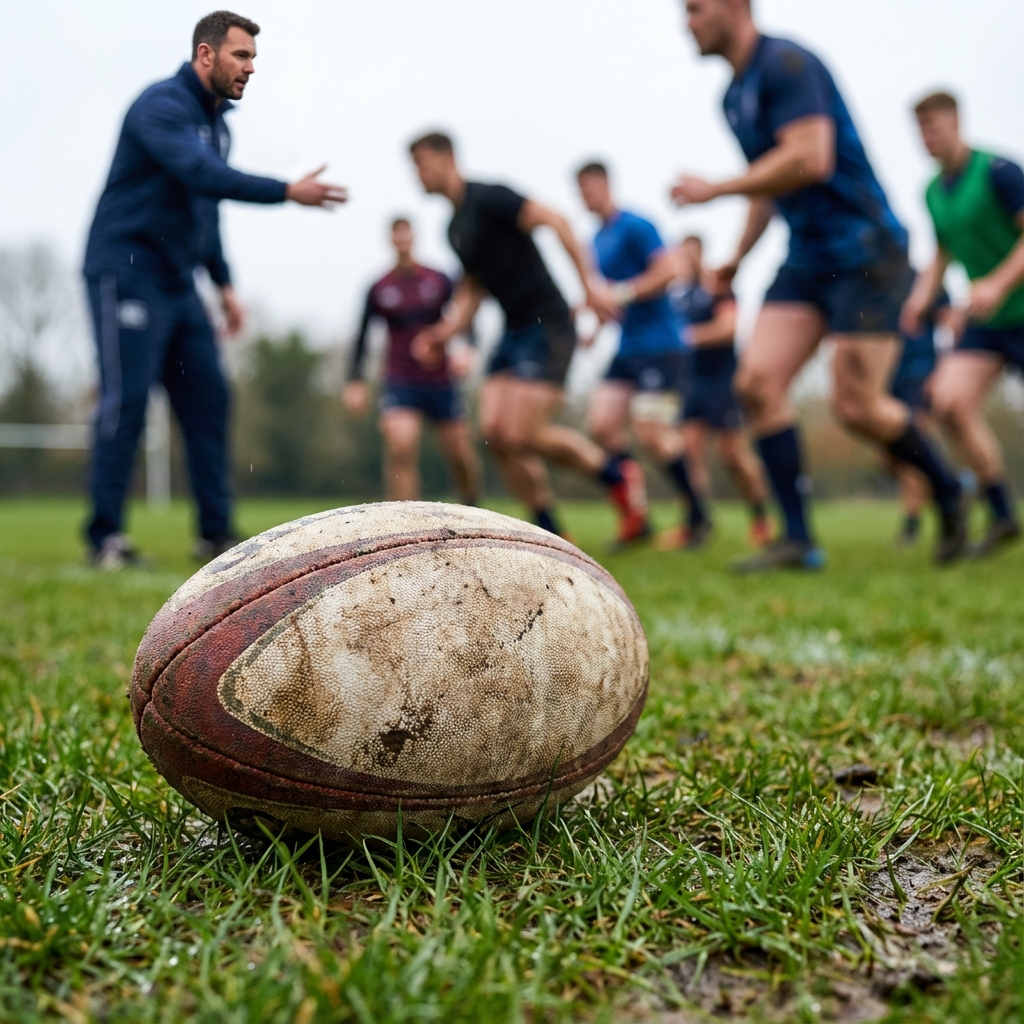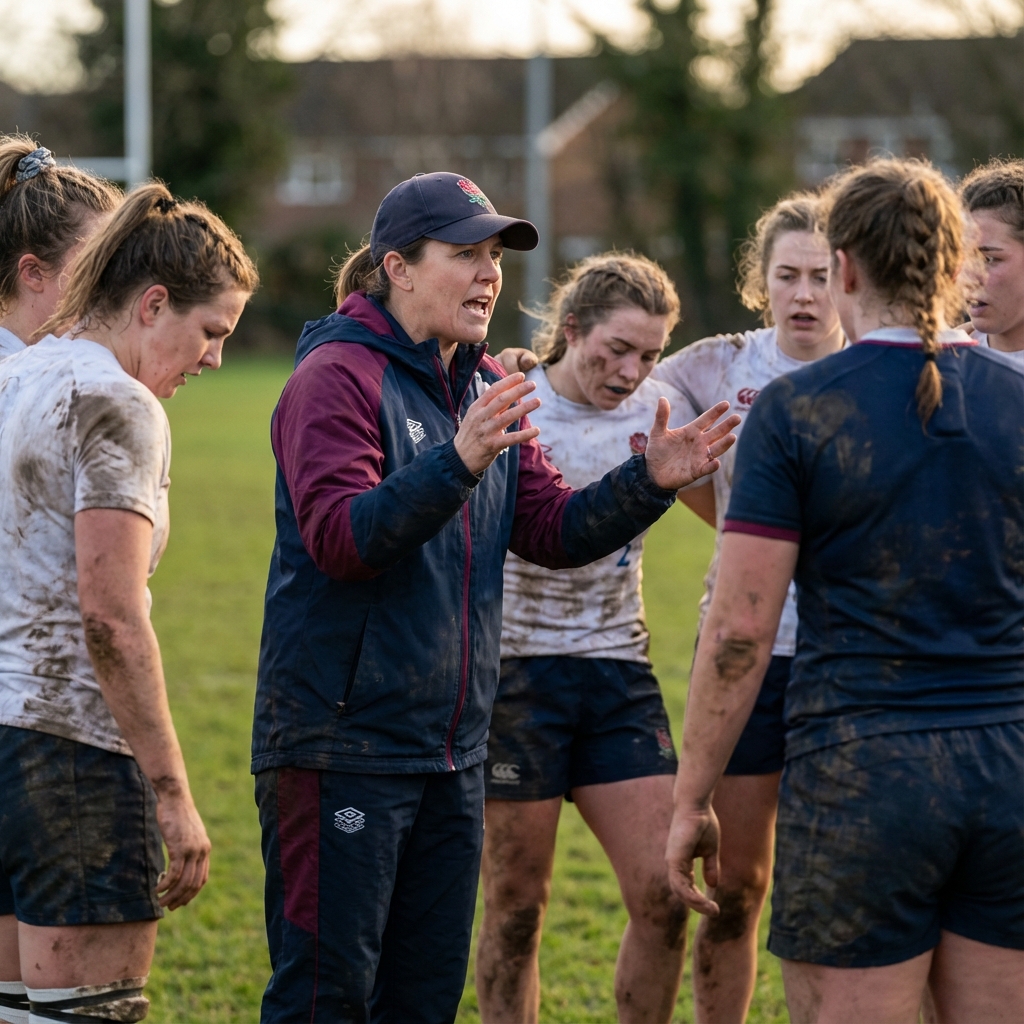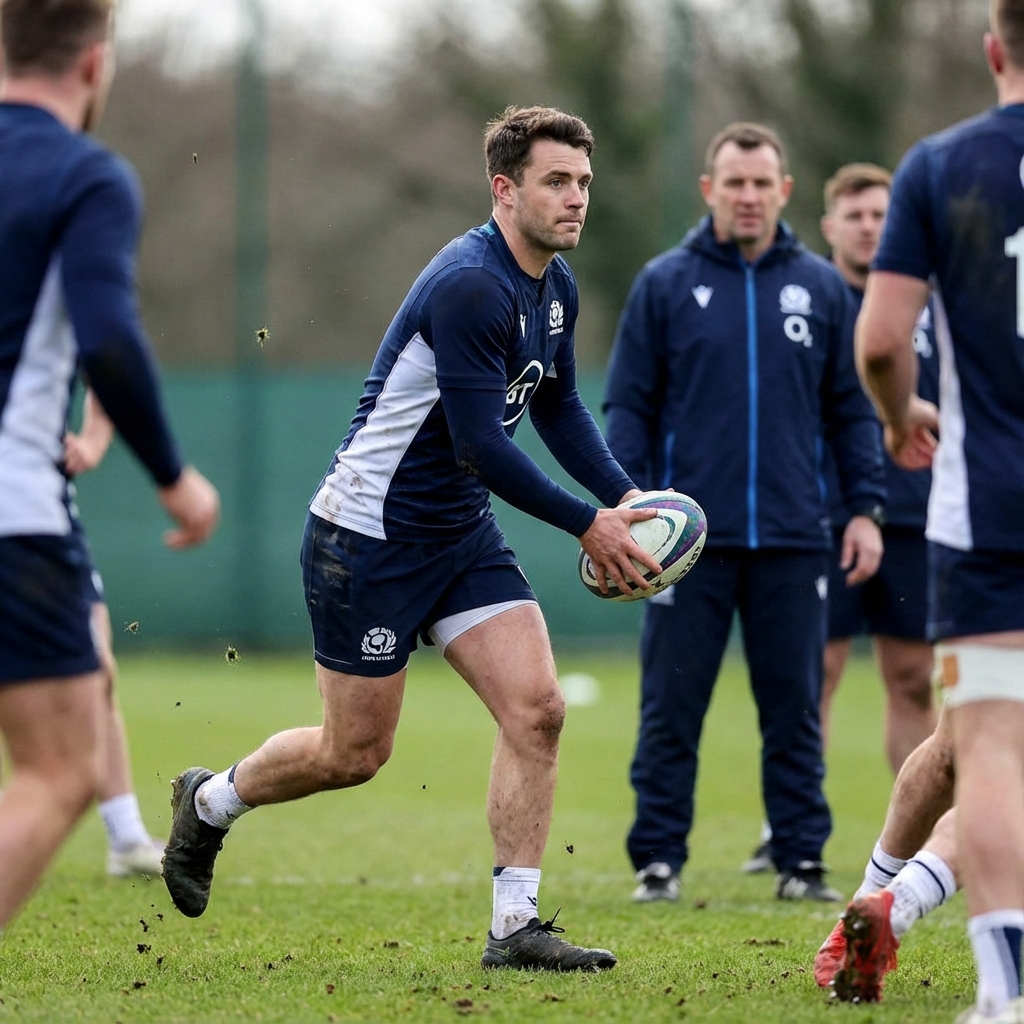My fowards seem afraid to ruck and stand around the?
My fowards seem afraid to ruck and stand around the ruck while in the way of the scrum half trying to get the ball out to the backs. They also don't support the ball carrier while he is being tackled. Please help me with any suggestions!!!
Sounds like you may need a new set of forwards. Is it a general discomfort with contact? If yes, you may want to start with some kiddie contact drills to get them more accustomed. Things like British bulldog, tackling from the knees, etc. If no, get them hitting rucking pads in practice. Many players hesitate because they are unsure of how to go in. I find sumo wrestling in practice is a fun way for players to learn the best ways to move another body. Set up a tournament and afterward get them doing some reps in a ruck situation. As far as getting closer to the ball carrier, if you have crazy runners you may reign them in a bit in order to give your supporters a better chance. Run plays back to the forwards. I would also suggest tight quarters, game situation practices where forwards need to ruck maul pick to score.
Good advice Josh. I would agree that some small grid, small number sessions might help--5m by 5m,2 on 2 or maybe 3 on 3 - tackle and protect possession. This can then be expanded to cover more width and use more players, but at the start it seems all your players need to get reps and confidence-which indicates small numbers exercises. It might also be that their hesitation means that the contact situation is already resolved by the time they've decided what to do. I have addressed this before with a variation of "touch" in warm-up where the touched player and "tackler" have to lie down immediately. If an arriving defender can touch the ball before a support player touches it then it's a turnover. I progress this to one (or more, as they develop) on-side defenders trying to touch the ball with hand or foot while the supporting ruckers keep them away (wrap em up and drive em back!). This helps defenders and support learn to look for when the ball is vulnerable and react accordingly. Once the team is arriving quickly and aware of the threats to possession, you'll see whether there are issues around skill and confidence in contact that need to be addressed. Good luck! HarlandRDO
Create game situations with overloaded attacks and defences. Run through at full pace. Let the players work out how their actions affect the ruck and delivery of quick ball. The closer to real game pictures you can get, the better prepared the players are in the game for this type of decision making. I think Scott and Josh's solution work towards this end very well. Dan [-advertisement removed]
You also need to establish why they're "standing around" the ruck - if they're simply trying not to overcommit the ruck but don't know where to stand you may want to focus on positional awareness, not on getting stuck in for the sake of it. Rucks are rarely turned over once formed with the laws as they are, so why waste bodies packing a ruck that you can't win?
Thanks to all of you. Very useful and informative. I am currently using all of the above and applying them to winning rucks from a defensive stand point.
William, you don't mention how experienced your players are and most responses assume your players are experienced enough to know what to do and how to do it. In Canada, every season we are developing a large proportion of players new to the game. Many come from sports other than rugby (like gridiron football) where the ruck is a foreign concept. One of our most difficult lessons is to get the new players to seek solid contact on one opponent and not to rely on their arms to push the opponents away from the ball (which doesn't work). Perhaps your forwards are reluctant to get low and drive with their chests and legs because it hurts when they do otherwise. Perhaps you could try some video that shows the cleanout done properly (avoid showing young players the contact situation at a profssional level - it may scare them off altogether.
There could be any number of reasons why this is happening. Scared of contact use suggestions from Josh, not sure where to stand if they decide not to ruck for reasons covered by Steve you will need to address where you want them to be, give them a specific task at this situation ie a pod to take second phase. I usually start with ruck sheilds/tackle bags to introduce the contact with plenty of input on the body angle and position to reduce injuries then build to contact suitsn and finnaly no protection. If you are loosing your own ball because of this problem work them as small groups in a high pressure grid. Two pads at one end of a 10m chanel and two at the other end with one scrum half who passes to the ball carrier they hit contact support players ruck, scrum half retrives the ball and starts off to the other pads offloads to a revovering forward. This can be repeated for a set length of time (90secs) which could be increased as they become more confidenti if you can get this up to 5 or 10 mins their fitness will also improve .
You could begin by making the forwards think about the ruck as a situation they can do a job in other than move a man out of the way. Lots of good comments above but think about educating the players to be aware of the scrum half and to set themselves in a defensive position (bodyguards and guards)either side or where the opposition is loaded. At the breakdown have them (in training) hit a situation with, say a tackle bag as the ruck and when they join they need to look which side they are needed as defenders, first man in needs to bind loosely on the weakest (defended) side and calls out loudly "bodyguard" (very similar to a wedge in a maul) and one more player outside him (not bound into the ruck, but tight in) calling "guard" they are then in front and protecting the scrum half and preventing the attack from coming in at the fringe of the breakdown and also pushes out 9 and 10 attackers.
I have found that making contact a competition works well especially with colts or young senior sides. I have recently introduced bosh of the week where a prize is awarded for the biggest hit. Showing dvd's (Jason Leonards Big Hits is a good one) got them relishing contact
Communication and support is vital components for Rugby success. I don't think that we should go as far as to assume that your forwards are afraid to get involved during ruck time. It seems to me that you have a communication problem AND that there is perhaps no one directing the play or where the ball should go to from one phase to the other and therefore the forwards finds themselves in 'Never, Never Land' from time to time. It is generally the job of the flyhalf to direct the flow of the game and to direct phase play. To empower your team, you can make a colorful card where you draw a rugby field - use the crad to illustrate to your players where you would like the ball to be set up in deferent areas of the field. As a team, agree on clear calls (codes) for when you want to pass the ball to a forward from a ruck OR when you want the ball to go through the hands of the backs. Allow your number 10 (or fist receiver) to shout out these calls, nice and early so that your forwards knows when the ball will go to the backs and that they should not stand in the way of the scrumhalf. And likewise when you want the ball to go directly to a forward from the scrumhalf off the rucks. Make sure your forwards are clear on the importance of beating the opposition to the point breakdown and cleaning at the rucks. Possession is 9 tenths of the law in Rugby and cleaning out the opponents at the rucks is vital if a team wants to retain their ball possession. Regards, MG
I coach a chinese girls team and the contact was the hardest part for them to do. Most were afraid of getting hurt. As we don't have proper rugby fields in our schools its usually an area 80m x 40m of rugged ground with lots of divets and even small stones in the dirt. I bought a heavy punching bag to use a a tackle bag. We practiced using that. After a while I became a crash test dummy so then they could run at me. Once they got use to falling down and hitting the dirt they were less afraid of getting hurt. We played many practice games without using the ruck until they were use to full physical contact. Once that happened implementing the rucking process was easy because now they weren't afraid of gettinh hurt. Sometimes is just plan old paddock bashing work. No drawings or videos just getting the physcal conditioning preparation done. Rugby is a full contact physical game. Conditioning players to these conditions is paramount. Once the get use to that part of the game the instruction is a lot easier.
I think the above suggestions are excellent in improving comprehension of rugby strategy and the roles of each position. However, I also think to fix these issues conditioning is essential. Hard rucking can be more draining than sprinting up the sideline. When a player is fatigued he or she is more likely to stand around the ruck with out participating or not getting into an attacking position. The same goes for supporting ball carriers. I like Josh's suggestion of teaching players run back towards the forwards when many young players are tempted to go off on their own. As for contact, a drill I like is the baseball diamond. Have a tackler standing at the "pitcher's mound" and a player with ball in hand running from first to second base. The tackler must hit the runner before he reaches next base. Have a pair do this three or four times then switch out. With the rest of the team watching it puts peer pressure on the tackler to hit hard. While some don't like this rugby is a team sport and players need to be accountable to the standards of their teammates. It helps many players overcome their discomfort with contact.
If its not fear of contact or lack of fitness ,There's also the possibility they are hovering at the back of the ruck (and not commiting to it or getting in the way of the 9-10 channel) hoping they will get their hands on the ball and go on a run ! You dont mention their ages but this is something I've seen in young players from U9 to U12s squads .
Ask your timid forwards to be hungry or aggressive. Tell them to gobble it up like a T-Bone steak or pac-man. Their mind set must be, "that's MY ball" . If they can't see the ball then instruct them to Wade through & over the players on the ground putting both at bay behind your heel.
The biggest reason for hesitation entering a breakdown is arriving simultaneously and butting head to head. The way to avoid that is to turn SLIGHTLY SIDEWAY, DIP THE SHOULDER, TAKE THE BLOW ON THE BACK AND SHOULDER, THEN LIFT AND DRIVE. You can do this SAFELY AT SPEED.
If they are still hesitent to pick up the ball switch the practice ball with a rock or brick of 10-15 pounds. After a couple dozen trips down the pitch of squat, lift & hop they will be more than happy to pick and go.
I tell the kids to be `ruck bullets` and not `ruck inspectors`. Using this terminology has really helped. All my U10 scrum half needs to do is shout `BULLET` and the forwards know exactly what to do (or not to do). I find the players respond better to their team mates than the coaches..even at U10s.








